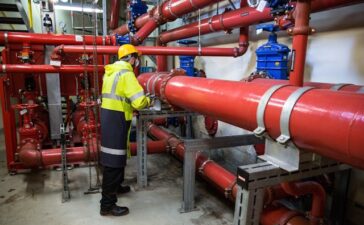Industrial job sites keep changing, so training tools must also keep improving to stay useful and keep workers safe. Usually, companies use old teaching styles like lectures or written guides, but these do not always get workers ready for the unpredictable or risky situations many people see every day. Industries such as mining, construction, oil and gas, and the energy sector bring major value to Australia, but these sectors also report some of the country’s most serious safety issues for staff. For these reasons, digital learning tools—most importantly gamification and AR (augmented reality)—are starting to change how training materials reach workers, pushing for stronger hazard recognition and planning for emergencies across all teams.
Immersive technology proves useful for lone workers or those away from teams because Australia has large and spread-out workplaces, like mines or oil rigs, where employees often work alone or very far from others. If something sudden happens, proper training lets workers act right away, while confusion or uncertainty could end in harm. Electronic devices such as a lone worker alarm give alerts if there is an accident, but before that point, staff must notice danger signs and react the right way for the best safety. Virtual training lets these people practice what to do over and over, so skills stay sharp without putting anyone at risk.

Gamification: Making Training More Engaging and Memorable
Adding game features gives training work a new twist by letting people learn through doing, not just listening or reading. Applying parts of common games—like points, rankings, badges for hitting goals, or story progress—lets the team take part in tasks step by step. Staff then find the work easier to stick with and often remember more. In a place like Australia, where workers often change or come from different backgrounds, gamified lessons keep the main rules clear and consistent; everyone gets the same core safety facts, whatever their language or past knowledge. Training by gamification works because it copies daily work jobs, so people can try again and again with no risk to themselves or others. Consider a staff member at a chemical plant: this person can use a game mode to try choices for stopping a dangerous spill, where every move makes new results happen, and they can view the lessons from the outcome. After enough cycles, practicing like this builds up real skill and certainty, so when real emergencies come, workers act swiftly and safely.
Augmented Reality: Bridging the Gap between Theory and Practice
Augmented reality acts as a strong method in industrial training today. Using tools like smart glasses or mobile screens, AR puts digital instructions on top of real workspaces, giving hands-on guidance in real time. Specially in Australia, with its wide spread sites and isolated work teams, AR keeps staff learning without flying them in or stopping work hours. Companies can run risk-filled practice drills with AR, showing workers how to touch and use real machines, spot dangers, and act out rescue steps. Take an electrical technician: this person might open an AR program to see a live arc flash simulation that compares event cause, impact, and lists step-by-step actions as it all unfolds. Watching a living model like this helps people spot work dangers better than words or flat photos can show.
Enhancing Hazard Awareness through Simulation
A big edge with full-sense digital training is that it puts people in high-risk situations just like real life, but keeps all harm away. Scenarios run on virtual reality (VR), AR devices, or even regular desktop screens might include emergency gas leaks, faulty engines, or fire events to practice in repeatable cycles. Staff jump through these drills, react under a time cap, and get feedback from the system right after choices. This way of skills-building improves hazard reading, an important step to stop on-site injuries. When people replay real-feel risk drills often, their sharpness for signs of problems and meanings behind their steps goes up. Fields like mining or drilling at sea count on fast moves and top training; good practice can make a hard event much safer for teams. Since these drill sessions feel real to workers, the learning usually stays clear for the long term.

Data-Driven Insights and Continuous Improvement
Digital training with play elements or full experience tech can log each choice a person makes for review later. Where normal tests or just a boss checking are common in old training, digital apps mark performance by tracking each step the learner takes. Such records turn into real information about skill level, risk moves, or weak spots for every staff person and for whole groups. Australia’s strict work rules in these jobs push companies to show solid data on safety every year. Firms use these learning logs to update training, focus help where the risk is higher, and report real stats to rule checkers. Doing this over and over pushes learning up, fuels safer habits, and places risk checking as a steady part of everyday jobs.





